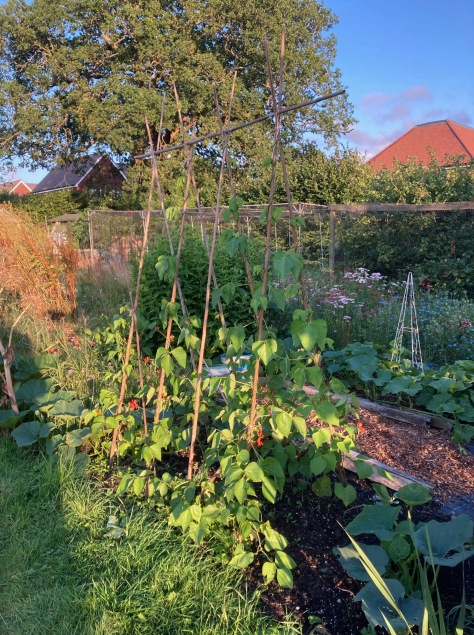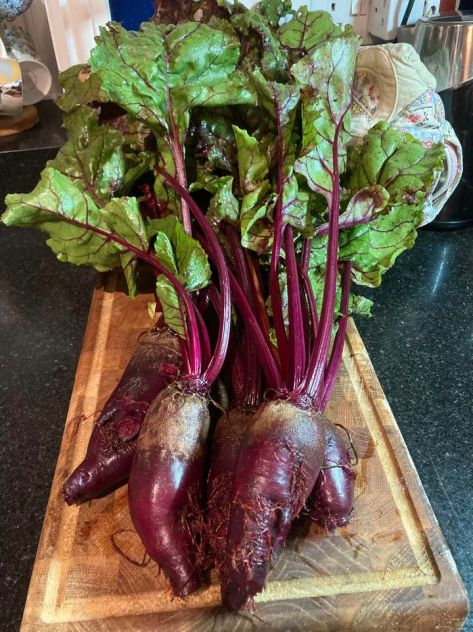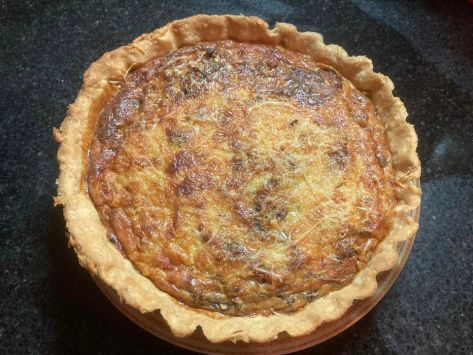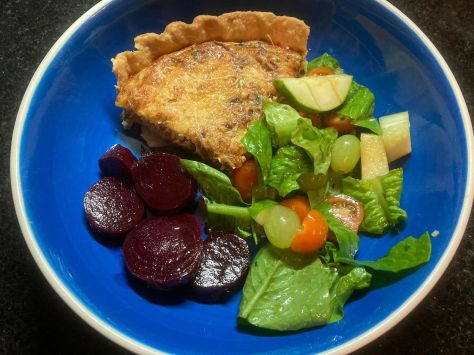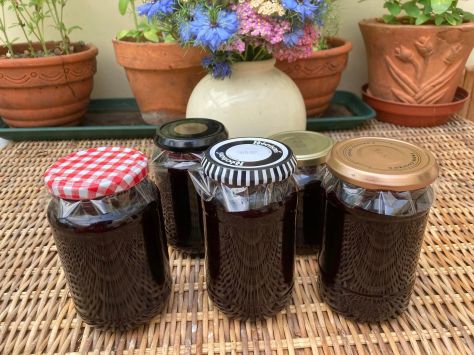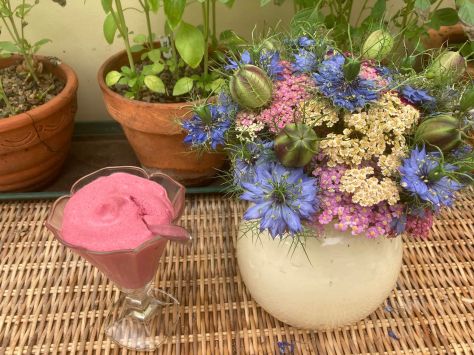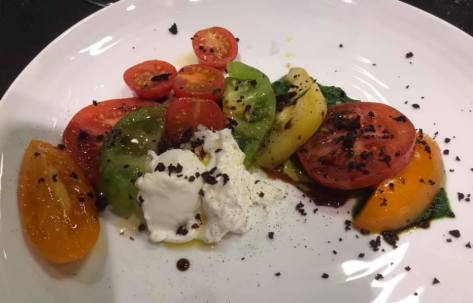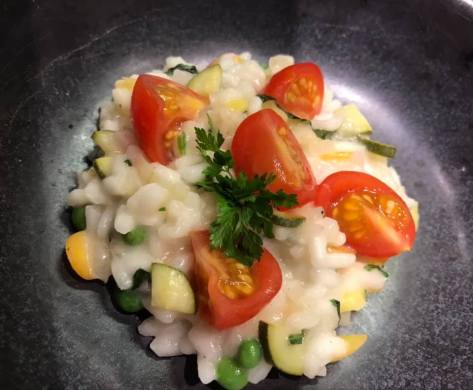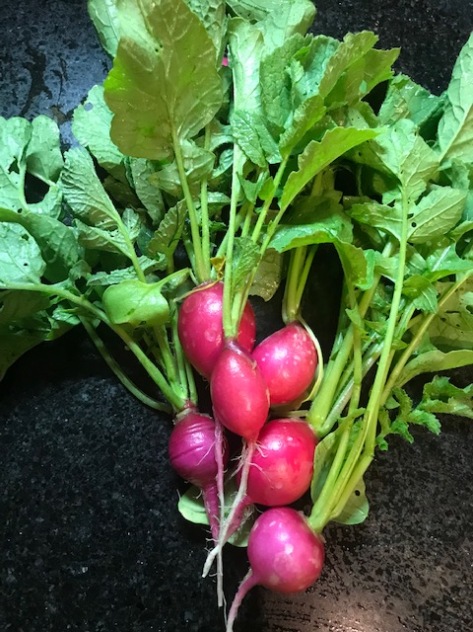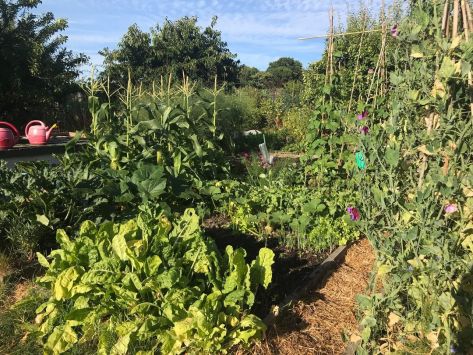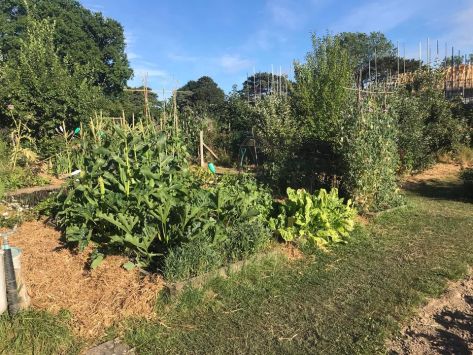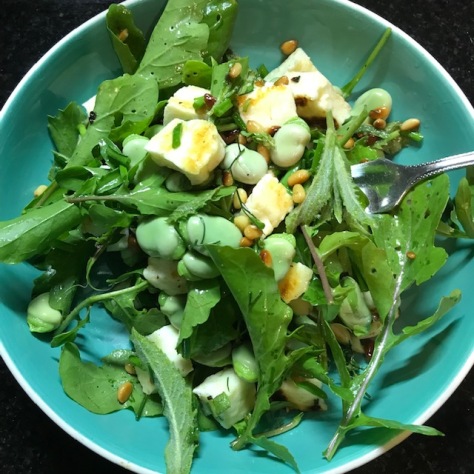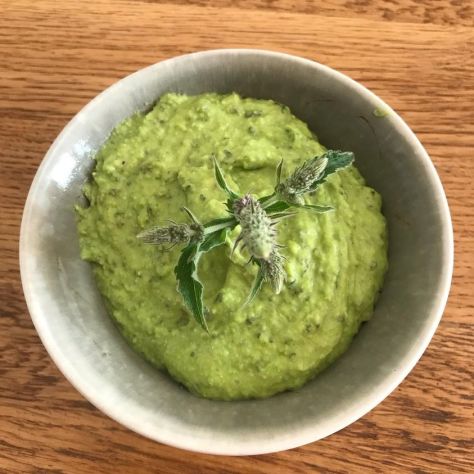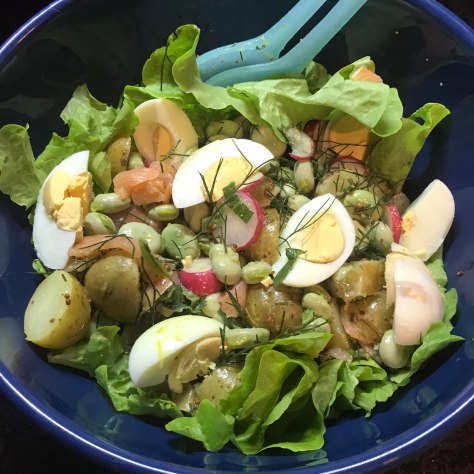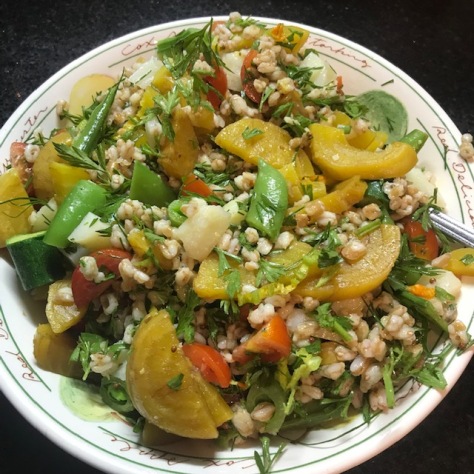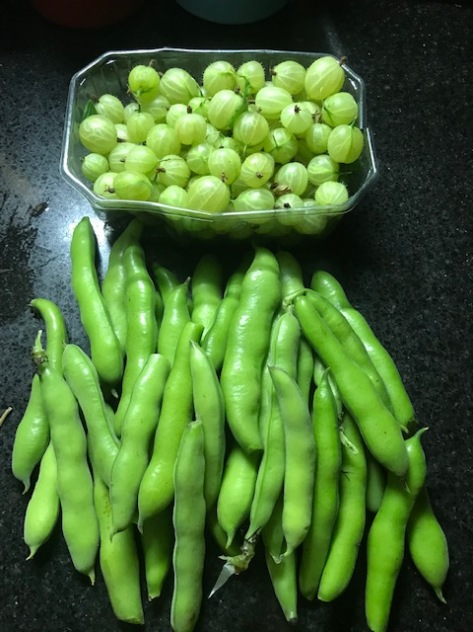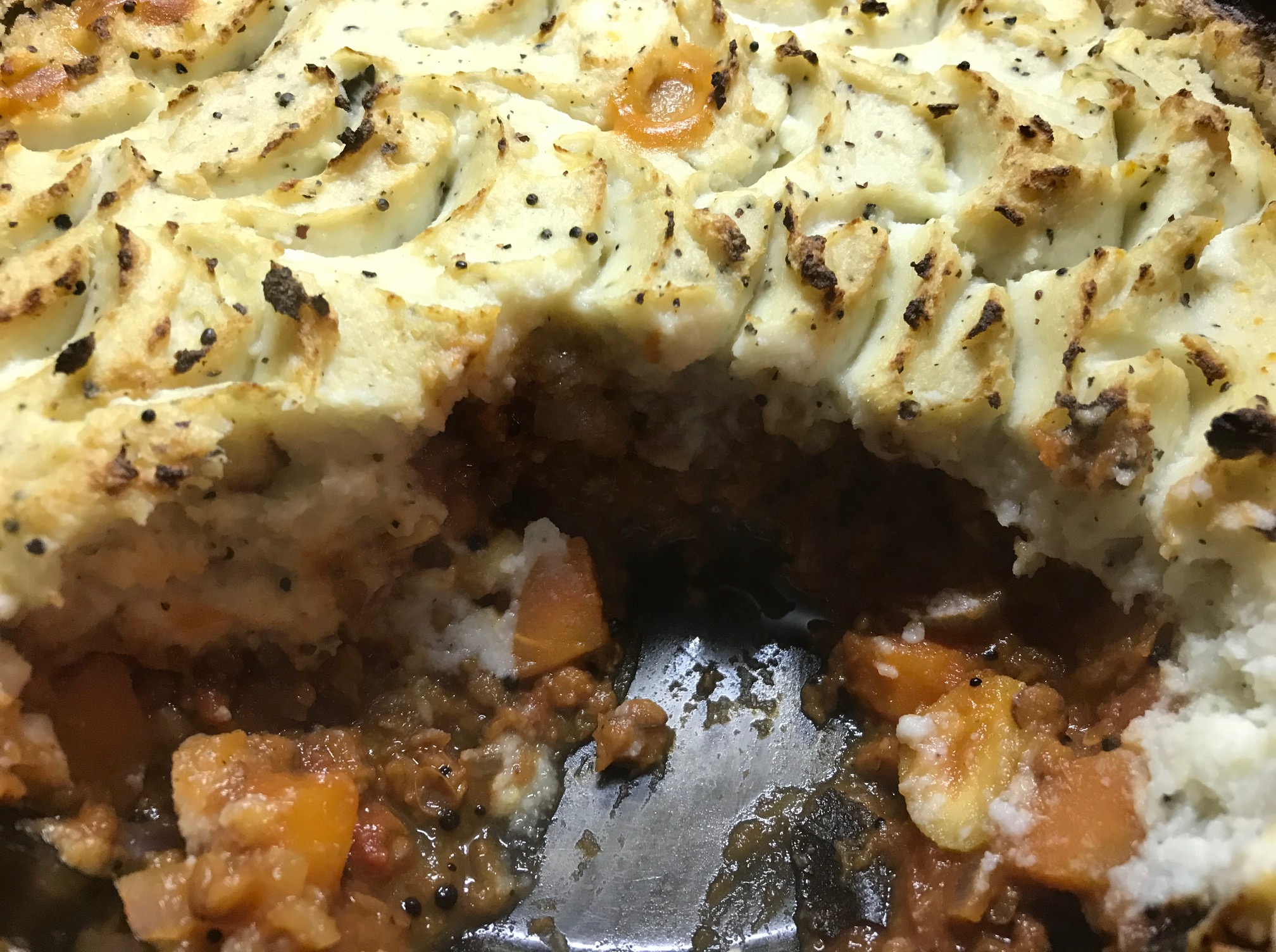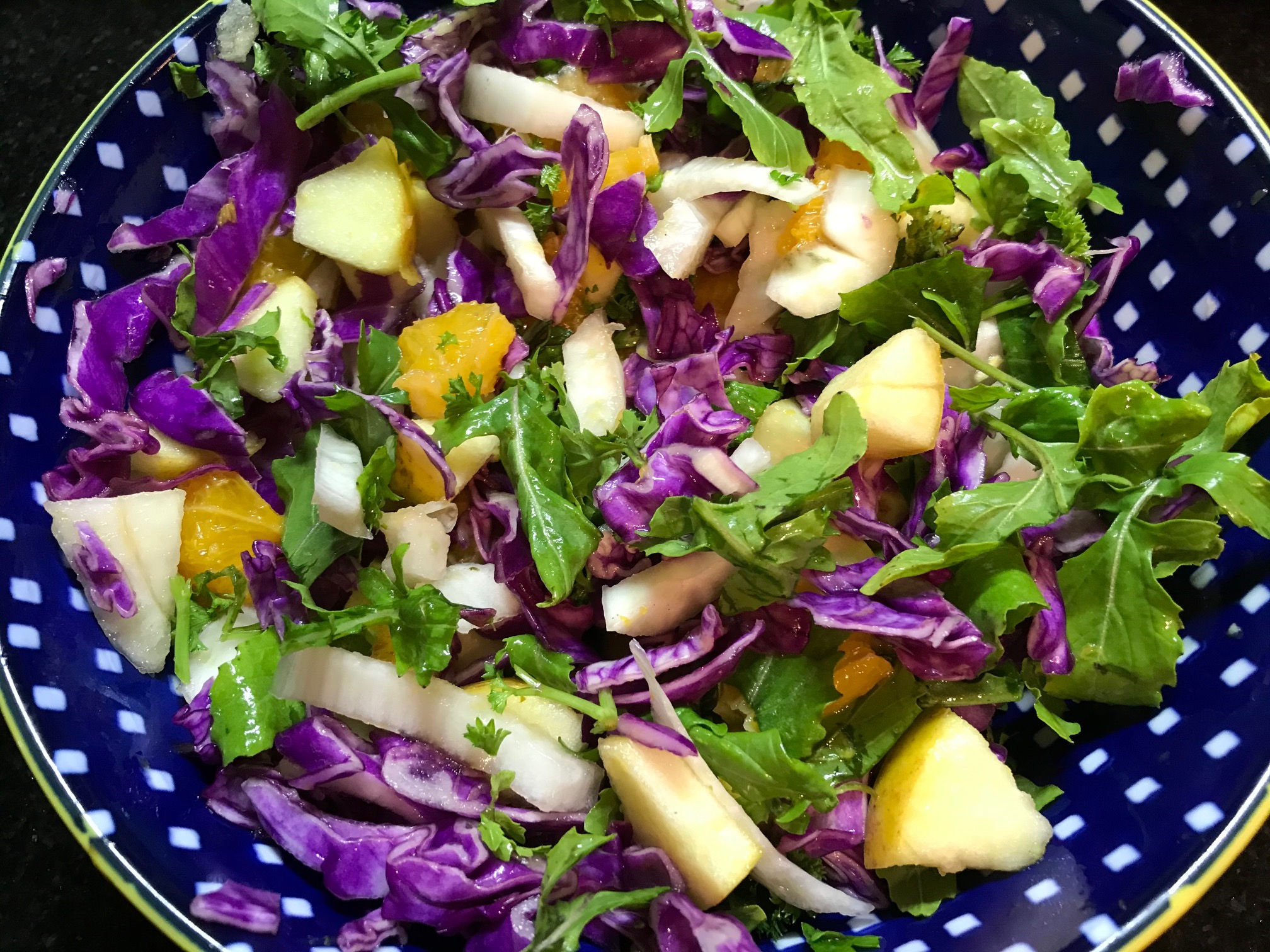I’ve been meaning to write this post for some time now, but as usual life has got in the way and I haven’t managed to write any blog posts at all for quite some time. I have, however, still been cooking and gardening, of course (awful winter weather permitting), and I’m determined to share my experiences with the Instant Pot, especially as I’ve become more familiar with its uses.

I treated myself to an Instant Pot electric pressure cooker a couple of years ago with my father’s usual Christmas money. My younger son and daughter-in-law have a Ninja Foodie in the US, so I’d had a little play with theirs and was impressed with the results – plus reduced washing-up for soups and casseroles as you sauté and cook in the same pot. I didn’t go for that model as I have a small kitchen and didn’t like the fact that the air fryer lid stays in situ all the time, taking up a lot of space on the work surface, whereas the Instant Pot has two interchangeable lids. You need space to store them, but at least the pot itself only takes up a similar amount of space to a standard slow cooker when in action.
I have to confess that I was quite scared of it at first; I’m always hopeless with new gadgets and memories of my mum’s hissing pressure cooker did nothing to reassure me. Once I plucked up courage to have a go (following the instructions meticulously), I realised that it’s actually simplicity itself: just press the appropriate buttons, make sure the lid’s on properly and Bob’s your uncle. There’s a tiny bit of hissing as it comes up to pressure, but that stops quickly as soon as it reaches pressure and then it sits there silently doing its stuff as you go about other things – no steam in the kitchen, no worries about gas flames going out if you pop out. Once it finishes, you can release the pressure manually, which does cause a noisy rush of steam, but I usually opt for natural release, which allows the contents of the pot to carry on cooking gently and keep warm in the process (plus no hissing!).
When I first experimented, I tended to look for specific Instant Pot recipes, such as this chilli con carne, but in actual fact you can use your own favourite recipe, just remember that the liquid won’t evaporate as much as it would in the oven or on the hob, and add less to start with. If you do end up with too much liquid at the end, it’s easy to just switch to sauté and reduce as much as you need. In the Instant Pot, the actual cooking time for a chilli or casserole can be anything from 10-30 minutes – significantly less than the three hours you’d expect in the oven, or 8-10 hours in a slow cooker. I’ve made my standard lentil bolognese recipe with great success, and my beef & Guinness casserole worked a treat – so tender. Soups are equally easy and of course you can use a stick blender to purée them directly in the Instant Pot, further cutting down on washing-up.

What I’ve recently come to appreciate, though, is the wonderful timesavers that are really game-changing. Cooking pulses, for example: I still like to soak my own beans for chillis or bean casseroles, as I like the choice and think you get a better texture (plus it’s usually cheaper). But, even after you’ve soaked them overnight (I often start with boiling water to speed up the process), they can often take between 45 minutes to several hours to cook, depending on the variety. Dried chickpeas are particularly time-consuming. In the Instant Pot, however, soaked beans take no more than 10-30 minutes. You can even cook them without soaking first, although I must admit I haven’t tried that yet. Aduki beans for my aduki bean & leek casserole were ready in 10 minutes plus natural release, whereas butter and haricot beans for my bean chowder needed just 20 minutes plus natural release. And while dried beans often need variable amounts of time to cook using the traditional stovetop method, depending on how old they are or how long you’ve had them in the cupboard, these were all perfectly soft – win, win. This recipe for pork and butterbean pie is a bit like a cottage pie but with mashed butterbeans instead of potato for the topping.
Pork and Butterbean Bake – serves 6-8
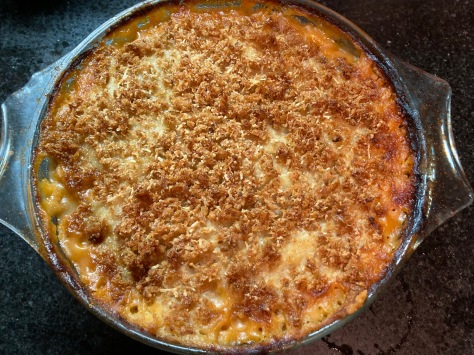
350g dried butterbeans
5 or 6 fresh or dried bay leaves
4 cloves garlic
2 sprigs fresh rosemary, finely chopped, woody bits discarded
4 tbsp olive oil
1kg minced pork
2 leeks, chopped (optional)
1 red pepper, chopped (optional)
2 rounded tsp ground coriander
2 heaped tbsp tomato purée
1 large can chopped tomatoes
75g butter
about 2 tbsp breadcrumbs (white or brown)
1 tbsp grated Parmesan cheese
Salt and pepper to season
Put the butterbeans in a large pan and pour over boiling water, then leave to soak overnight. Drain and either cook in the same pan with fresh water and the bay leaves, bringing to the boil and simmering for 1 to 1.5 hours until very soft OR transfer to the Instant Pot, cover with a litre of water, and pressure cook on high for 30 minutes, allowing to natural release at the end. When cooked, drain off the cooking liquid (you can keep this for a beany stock for vegetable soup), discard the bay leaves, then place the beans in a large food processor with the butter and half the chopped garlic. Blend until you have a smooth purée, then set to one side. This works best if you do it while still warm.
For the base, heat 2 tbsp olive oil in a large ovenproof pan, then add the minced pork and stir until lightly browned. Stir in the chopped leeks, remaining chopped garlic cloves and the chopped red pepper (if using). Cook until starting to soften, then add the ground coriander, chopped rosemary and tomato purée. Cook for a few more minutes, then stir in the can of tomatoes and allow to simmer gently for 15 minutes. Season to taste, remove from the heat and top with the butterbean purée. You can, of course, transfer to an ovenproof dish at this stage if you prefer, but I tend to use my Le Creuset pan and place it straight in the oven.
Finally, put the breadcrumbs in a small bowl, add the Parmesan and the remaining 2 tbsp olive oil, then mix. Scatter on top of the butterbean bake and cook at 160°C fan/350°F/Gas 4 for 45-60 minutes until cooked through and the topping is golden brown. Serve with a green salad or leafy vegetables like broccoli or kale.

Another great use for the Instant Pot is to soften squashes prior to preparation. Last year I grew the Marina di Chioggia variety, which is delicious, beautiful, but very deeply ribbed, so a nightmare to peel. After commenting about this on the Foodie Translators group on Facebook, a colleague recommended cooking the whole squash in the Instant Pot on high pressure for 8 minutes. You place a trivet at the bottom (one comes with the machine), add about 400ml water and place the squash on top, then put the lid on. You can either release the pressure or allow to natural release, but then leave until cool enough to handle, and hey presto, the skin comes off like a dream. You can then remove the seeds and fibrous centre and cook the rest as you normally would, whether roasting or frying for a pumpkin, leek & apple soup or adding to a squash & leek risotto. Such a game changer. As a bonus, Leo the labrador will eat the skin and seeds with his raw food, whereas he’d previously turned his nose up at the uncooked squash.

Then there’s stock, of course, I used to use my slow cooker to make chicken stock with a chicken carcass after roasting, cooking it long and slow overnight. That’s still an option, but the Instant Pot can make stock in an hour, from either a leftover roast chicken carcass, or from uncooked bones. Just add onion, carrots and celery, bay leaves, leftover vegetable cooking liquid if you have it, or fresh water and cook on high for an hour. If you increase the time to 3-4 hours, you end up with a deeply flavoured and unctuous bone broth – give it a go! I tried this with a beef shin bone from my farm shop earlier this year and it was very good indeed, the perfect base for a Gulaschsuppe or beef risotto.
Finally, I used the Instant Pot to cook tangerines earlier this year for marmalade and for a take on Nigella’s clementine cake, which uses the whole fruit, skin, pith and all. I’d bought some lovely tangerines on offer and had a yen to make marmalade, for which I found this lovely recipe online: https://www.lanascooking.com/instant-pot-spiced-orange-marmalade/ . The original recipe only used 450g oranges, but I had a lot of tangerines, so I decided to double the quantity of fruit and use half for my tangerine cake. Cooking the fruit for standard marmalade or the cake usually takes a good hour and a half at least, so this was a huge time saving. I didn’t add any sugar to the Instant Pot as I was doing two recipes, but I did add a cinnamon stick and the cloves as I thought they would be nice flavours in both. Star anise or cardamom would have been good too. I used a litre of water for the double quantity of fruit, but the quantities in each recipe are right for each one in case you cook them in isolation.
Tangerine Marmalade – makes two standard pound jars
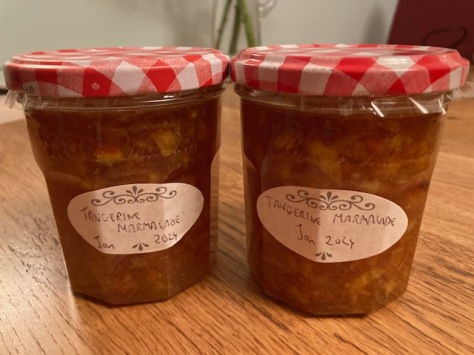
450g tangerines, scrubbed
560ml water
600g granulated sugar
juice of half a lemon
1 cinnamon stick
3 whole cloves (or you could use star anise or 5-6 cardamom pods)
Put the tangerines in the Instant Pot with 560ml cold water, add the spices and cook on high pressure for around 15 minutes. Allow the pressure to release naturally, then open the lid and leave until cool enough to handle. (If cooking in a normal pan, just add plenty of water and cook for 1.5-2 hours until very soft.) Discard the spices but reserve the cooking liquid.
At this stage, halve the fruit and try and remove all the pips, then thinly slice the rest of the fruit, peel, pith and all. At this point you can return the fruit to the Instant Pot to continue making the marmalade on the sauté setting, or you can use a normal pan. This isn’t a huge quantity so a large pan will do rather than a preserving pan, but if you double the quantities, I’d use a preserving pan.
In the pot/pan, place the fruit, 560ml cooking liquid, the juice of half a lemon and bring back to the boil before stirring in 600g granulated sugar. Stir until dissolved then continue to boil, stirring regularly until setting point is reached. This only took 10-15 minutes for me, but can vary.
I find the best test is to hold your wooden spoon over the pan and when the drips run together to form a bigger drip that breaks off sharply, the jam will be done. Otherwise, have a saucer in the freezer and place a little of the jam on the saucer, cool slightly, then push with your finger: the surface should wrinkle. You will need to take the marmalade off the heat while you do this test to stop it overcooking.
When set, allow to cool for about 10 minutes to stop the chopped rind floating to the top of the jars, then pour into prepared jars (washed and sterilised in the oven on a low heat), cover with waxed circles and lids, then label when cool.
I didn’t find it necessary to refrigerate the marmalade either before or after opening, as the original recipe suggests, but if you live in a warmer climate than the UK, you may prefer to store in the fridge! There’s plenty of sugar in the recipe to preserve it to my mind.
This would also work well with blood oranges.
The tangerine cake recipe uses the other half of the tangerines if you’ve decided to double up as I did, but I’ll repeat the instructions below just in case. It’s dairy and gluten-free so a good option for family and friends with food intolerances. Both my daughter-in-law and her mum are gluten-intolerant and a good friend has recently been diagnosed as coeliac at 63, so I’ve been doing lots of experimenting recently. Plus my other daughter-in-law is avoiding dairy as her new baby is intolerant of something in her breast milk and dairy protein is the likely culprit.
All-in-one Tangerine Cake – serves 10-12
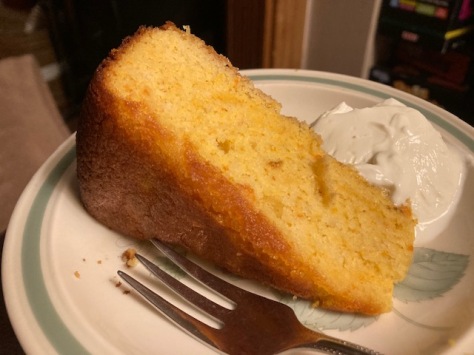
approx. 400g tangerines (about 4)
6 large eggs
225g caster sugar
250g ground almonds
1 cinnamon stick (or cardamom or star anise)
1 tsp baking powder (use gluten-free if necessary)
Put the tangerines in the Instant Pot with 560ml cold water, add the spices and cook on high pressure for around 15 minutes. Allow the pressure to release naturally, then open the lid and leave until cool enough to handle. (If cooking in a normal pan, just add plenty of water and cook for 1.5-2 hours until very soft.) Discard the spices and the cooking liquid.
Preheat the oven to gas 4/160°C fan/350ºF and grease and base-line a 20cm springform cake tin.
Once the tangerines are cool enough to handle, halve the fruit and try and remove all the pips, then place everything else, skins, pith, pulp and all, in a food processor and whizz until thoroughly blended. Add all the other ingredients to the food processor and mix thoroughly. Or you can beat the eggs by hand, adding the sugar, almonds and baking powder, mixing well, then finally adding the pulped oranges.
Pour the mixture into the prepared tin and bake for an hour or until a skewer comes out clean. You may need to cover with foil after 40 minutes or so if it’s getting too brown: do check. Leave to cool in the tin, then serve with crème fraiche or whipped cream – so good.
And there you have it – just a few of the myriad uses of the Instant Pot. Mine has many more settings besides, including air fryer, sous-vide and dehydrate modes, but I’ve yet to experiment with those. I’ll be sure to report back when I do!




